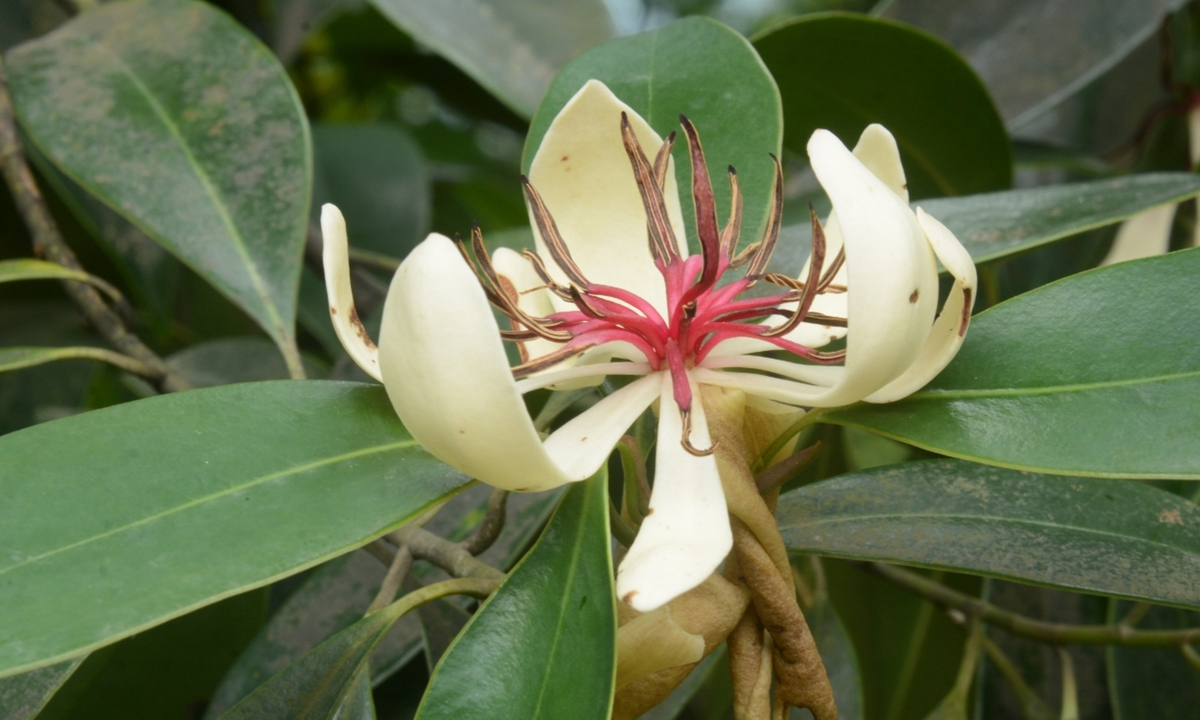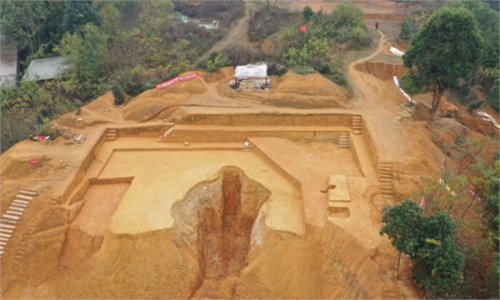ARTS / CULTURE & LEISURE
Nearly extinct magnolia species returns to Sichuan after rescue efforts

Critically endangered magnolia species Parakmeria omeiensis blossoms on Emei Mountain in Southwest -China's Sichuan Province. Photo: Courtesy of Yu Daoping.
Known among Chinese botanists as the "giant panda of the plant kingdom" because of its rarity and charm, a critically endangered magnolia species known as Parakmeria omeiensis has recently blossomed on Emei Mountain in Southwest China's Sichuan Province.
The flower has creamy-white, fleshy petals that curve inward. At its center, the flower displays purple-red stamens. Describing the blossoming flower as "a miracle," Yu Daoping, the botanist who found the flower, told the Global Times that Parakmeria omeiensis exists "nowhere else on earth but on China's Emei Mountain."
Parakmeria omeiensis was first discovered in the 1940s on Emi Mountain, then disappeared for nearly half a century before being rediscovered in 1987. It is extremely rare, so has been classified as a national first-class protected wild plant and has also been listed on the International Union for Conservation of Nature (IUCN) Red List of Threatened Species under the category of "Critically Endangered" species.
"Prior to our artificial cultivation, there were only four wild Parakmeria omeiensis plants in the world," said Yu.
The recent Parakmeria omeiensis blossomed at a manmade cultivation site dedicated to the species on Emei Mountain. The site was created by researchers to mimic the wild habitat best suited to Parakmeria omeiensis.
Including the one that recently bloomed, the site has a total of 80 Parakmeria omeiensis plants. If it were not for the site, the flower's "low seed germination rate and pollination challenges" would have led to the species extinction, Yu told the Global Times.
Under the care of local botanists, the Parakmeria omeiensis blossomed around 10 years earlier than its expected flowering time. Due to the species pollination barriers, Parakmeria omeiensis typically needs over 20 years of growth to bloom.
"The early flowering shows that our several years of efforts to rescue Parakmeria omeiensis have not been in vain," said Yu, adding that the recovered species is "an important indicator of the local environment's rich biodiversity."
A total of five manmade cultivation sites have been established around Emei Mountain since 2016 to conserve Parakmeria omeiensis. Over the years, a total of 900 Parakmeria omeiensis seedlings have been replanted across these sites with a high survival rate of 92 percent. So far, the number of Parakmeria omeiensis in China has grown to reach 3,200 plants.
"The conservation of Parakmeria omeiensis shows that a multi-site ex situ conservation method can be replicated to conserve other endangered species in China," Xu Yao, a fellow botanical species conservation expert, told the Global Times.



